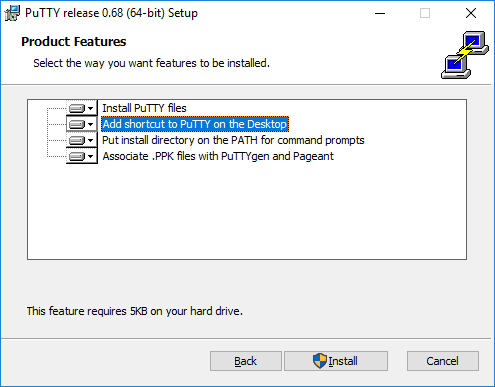

So for example, if my MyID were abc12345, and I was going to connect to the GACRC Linux training computer, then in the "Host Name (or IP address)" field, I would type save yourself the time, you can have PuTTY save what you type in the "Host Name (or IP address)" field by giving the connection a name in the "Saved Sessions" text field. hostname is the hostname of the GACRC resource to which you are connecting. You only have to edit these two text fields:įirst, type hostname in the "Host Name (or IP address)" text field. Click the one that says "PuTTY", not PuTTYgen).

Double-click the PuTTY shortcut on your desktop, and you will see the following window (If you didn't put a shortcut on your desktop, search for "putty" in the windows search bar in the bottom left of your screen, next to the start button. Now That PuTTY is installed on your computer, you can follow these steps to connect to GACRC resources (to which you are authorized to connect) with it. If you have set up Cisco An圜onnect before, more information can be found here

If you are on campus, connected to a UGA network, you don't have to worry about that. Please Note: If you're off-campus or not connected to a UGA network, you will need to connect to UGA's VPN via the Cisco An圜onnect client before you can successfully connect to GACRC resources with PuTTY (or any other similar program). You may un-check the "View README" file if you wish, and then click "Finish." Once the installation has completed, you will see this screen as shown below. Next, click "Install." A window will appear in the middle of your screen asking "Do you want to allow this app to make changes to your device?" Click "Yes."

In the next setup screen, click the red "X" next to "Add shortcut to PuTTY on the Desktop, and select "Entire feature will be installed on local hard drive." Now that you have downloaded the PuTTY installer, click the installer as shown in the bottom-left corner of your browser Click the 64-bit x86 MSI installer as shown in the following screenshot: Please note, these screenshots may become out of date as newer versions of PuTTY are released. PuTTY is open source software that is available with source code and is developed and supported by a group of volunteers. PuTTY is an SSH and telnet client, developed originally by Simon Tatham for the Windows platform.


 0 kommentar(er)
0 kommentar(er)
